One of the most fascinating things to happen within the medium of comic books is the issue of creator credit. Comic books are a medium unlike any else because of the amount of people that work on an issue. Unlike books, there are more than one creator per comic issue, but unlike movies, there are not enough that the credit should go to one sole creator (Such as how directors get the credit for a movie’s success.) Comic books are a medium that relies on equal collaboration, but the multitude of writing styles makes it hard to correctly determine the amount of credit a creator gets. One fascinating example of this is with the 1964 creation Metamorpho.
Metamorpho is a character within DC Comics that has a publishing history that is equally as interesting, if not more interesting, than his fictional history. Officially, Metamorpho is credited as a creation of Bob Haney and Ramona Fradon, but plenty of others had their hand in his creation.
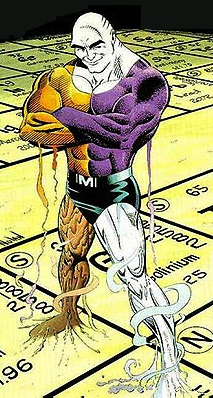
George Kashdan, an editor at DC Comics, originally came up with the idea. In a 2006 interview with Jim Amash for Alter-Ego #78, he stated “‘Metamorpho’ was my original idea. The basic premise is a man with the bodily ability to change himself chemically. That was just something that came from thinking, and thinking out loud.”
George Kashdan was not the only one to have his hands on Metamorpho before Bob Haney and Ramona Fradon. Jack Schff and Murray Boltinoff both had their hands on it, with George Kashdan saying, “Jack Schiff threw in some thoughts, and Murray [Boltinoff] did, too.”
George Kashdan then sent it off to Bob Haney, who really developed the character. In an interview with CBR in 2013, Ramona Fradon said, “[Kashdan] had studied science when he was in school and he thought of a character made of four elements who could change himself into different chemical compounds. He gave Bob Haney the idea, and Bob fleshed it out brilliantly. I believe George continued to supply the “scientific” details for Bob to use throughout the life of the feature.” She elaborated on that by saying, “The characters Bob invented were such deliciously overdrawn stereotypes that they were wonderful to design and animate.”
Ramona Fradon also had a huge hand in the creation of Metamorpho, and he would not have succeeded without the work of Fradon behind him. George Kashdan, in that same Alter Ego issue, said, “Then I asked Bob Haney to write an introductory script, which I liked. I said, “It reads like it cries for Ramona to draw and ink it.” But she [only penciled it]; then we would send it out to Charlie Paris, who said, “She’s the best artist I ever inked.” They were a great team. The [character] design was great. Ramona did that. She surrounded him with some great characters.”
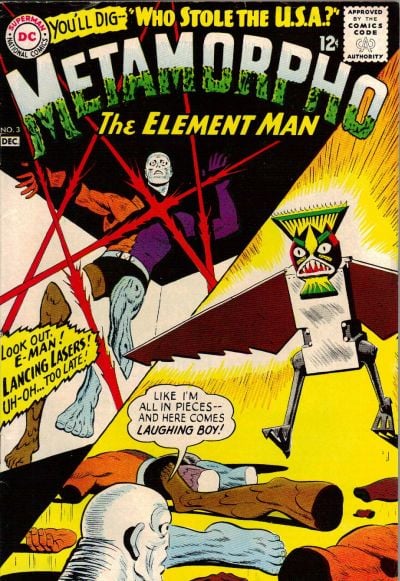
It could be speculated that George Kashdan saw the feature as being perfect for Fradon because of Fradon’s masterful ability to draw exaggerated figures. When CBR asked Fradon about her favorite DC characters to draw, Fradon responded with “I loved drawing Plastic Man and, of course, Metamorpho. They allowed me to exaggerate, and that comes more naturally to me than drawing superheroes, where you have to be so serious. I’m afraid I have never been able to take superheroes seriously.”
What Kashdan saw in Fradon can be speculated to death, but we do know how it turned out. George Kashdan, Bob Haney, and Ramona Fradon all took pride in their creation, and the character would not have been the same without them. Metamorpho would have never been made without George Kashdan’s scientific knowledge. Metamorpho would not have had the wonderful cast of goofy characters behind him that makes him so great without Bob Haney. Metamorpho would not have been the same without Fradon, and he most likely would not have succeeded without her. She was chosen by name, because her art fit so well with the original vision. If there was a different artist, the concept would have been weakened. Because Ramona Fradon was the one to draw Metamorpho, she enhanced the feature and greatly improved the concepts. Her distaste for drawing superheroes is what made her perfect for Metamorpho.
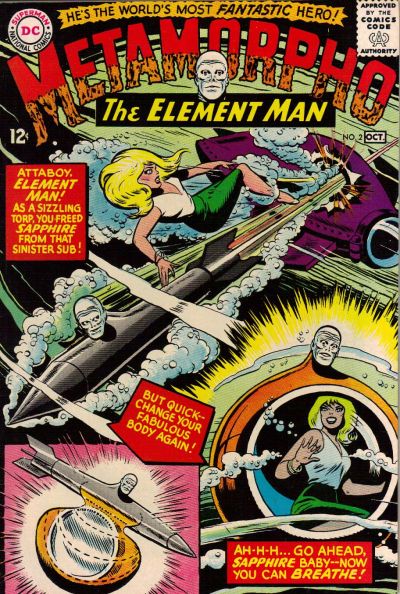
This just begs the question: Who should get credit for the creation? Obviously Bob Haney and Ramona Fradon get credit, which they deserve, but what lengths should credit go? Should Jack Schff and Murray Boltinoff get credit? We know for a fact they gave input and ideas to the character, but how many ideas? The problem with comic books is that there is often not enough paper evidence in order to know who contributed what, and that means it is hard to determine if someone created enough in order to count as the creator. Currently, the matter of giving “creator” status to comic book creators is through legal means, in which contracts stipulate if you created a character, instead of the actual development process determining if you count as the creator.
This point is best described with the plight of Bill Finger. Bill Finger and Bob Kane, in 1939, created Batman together. The problem is, Bob Kane did all of the negotiations between himself and what later became DC, meaning Bill Finger was left as a ghost writer while Bob Kane got all of the credit. Golden Age artist Irwin Hasen summed it up with this, in a 1999 interview with Roy Thomas for Alter Ego 1, “Bill Finger was the genius behind some of those characters, because he created the motifs. He did Batman. He wrote all the stories and he practically created it in spite of what a lot of other people say.”
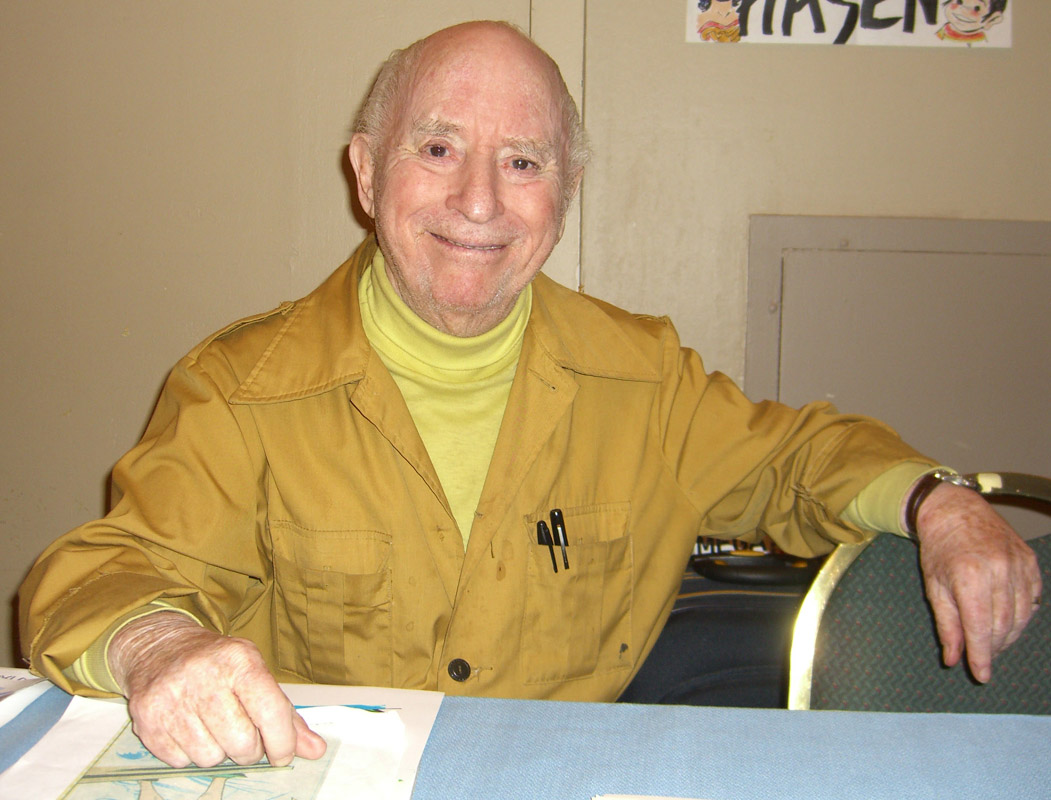
Comic book creation is an often messy process that involves a multitude of parties, with each one contributing a lot to the creation of characters. Crediting a creator for their work on a character is not as simple as listing their names. It involves a lot of context, and often a lot of research. Like how comic books often have years of history behind them that often confuses the reader, the issue of creator credit is a messy combination of paper documents, first-hand accounts, contracts, and a multitude of other sources. These sorts of issues do not have a good resolution to them, but we still have a long way to go before we reach an acceptable state. As Filmmaker and YouTuber Scott Niswander (Nerdsync on YouTube) so eloquently puts it, “Context, not content.”
The story of the creation and subsequent crediting in the story of Metamorpho is not one that is talked about, and for good reason. It is an interesting story, and a good read, as it does not involve large injustice, but it is impractical to talk about. This is due to the fact that there are still a large number of issues and examples of creators not getting proper credit that needs to be worked out. Even though Bill Finger was recently credited as a co-creator of Batman, it is still listed as Batman created by Bob Kane with Bill Finger, while Superman creators Seigel and Shuster are listed as “Batman created by Jerry Seigel and Joe Shuster. At the bare minimum, Batman was an equal collaboration, although there is a lot of evidence that points to Finger having significantly more influence.
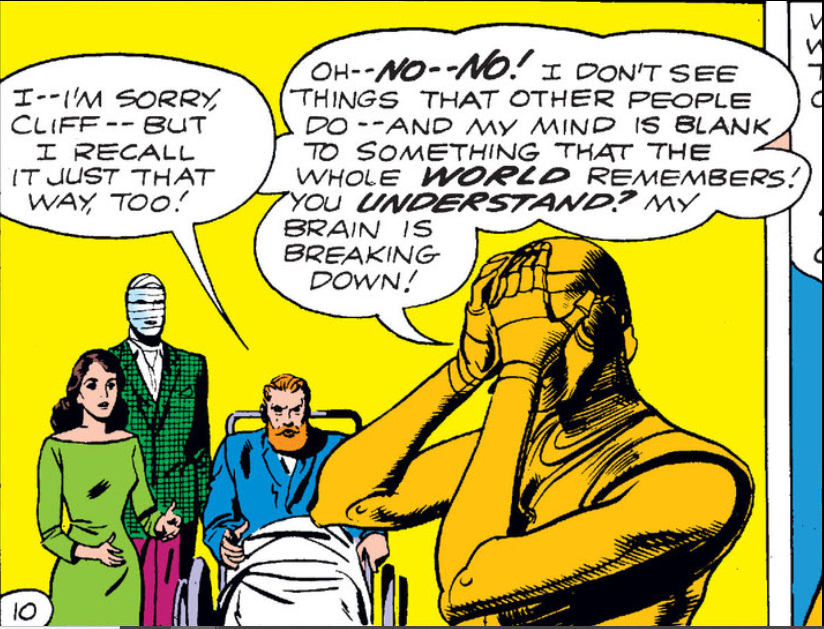
Even Bob Haney is not immune to this problem. Arnold Drake claimed that Haney only scripted an issue of Doom Patrol, and did not have any input on the creation of any character was him co-creating Negative Man. These issues need to be addressed and they need to be resolved. It is possible that Bob Haney stole credit. It is also possible that he did not and he now has an asterisk next to the credit for all-time. Either way, it needs to be worked out. Now is the time for this to happen. Even though a majority of the people we are arguing about have passed away, they still deserve credit for their creation, especially now that superheroes have exploded into the mainstream. Companies need to admit their past mistakes and come forward now to research these claims and give proper credit where it is due. The time has come for creators to get credit.


